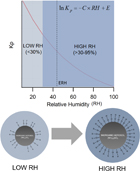EN21017Seasonal variations in characteristics, sources and diurnal patterns of carbonaceous and water-soluble constituents in urban aerosols from the east coast of tropical India
 , Prashant Hegde
, Prashant Hegde  , A. R. Aswini, M. Ashok Williams, R. Elavarasi and T. V. Lakshmi Kumar
, A. R. Aswini, M. Ashok Williams, R. Elavarasi and T. V. Lakshmi Kumar
Environmental context. The export of various man-made pollutants from northern India has a large impact on aerosol formation processes, their transformations and regional environmental chemistry over tropical peninsular India. The quantitative source apportionment of organic aerosols performed in this study provides a better understanding of their sources and implications for climate and air-quality management policies in South Asia.





